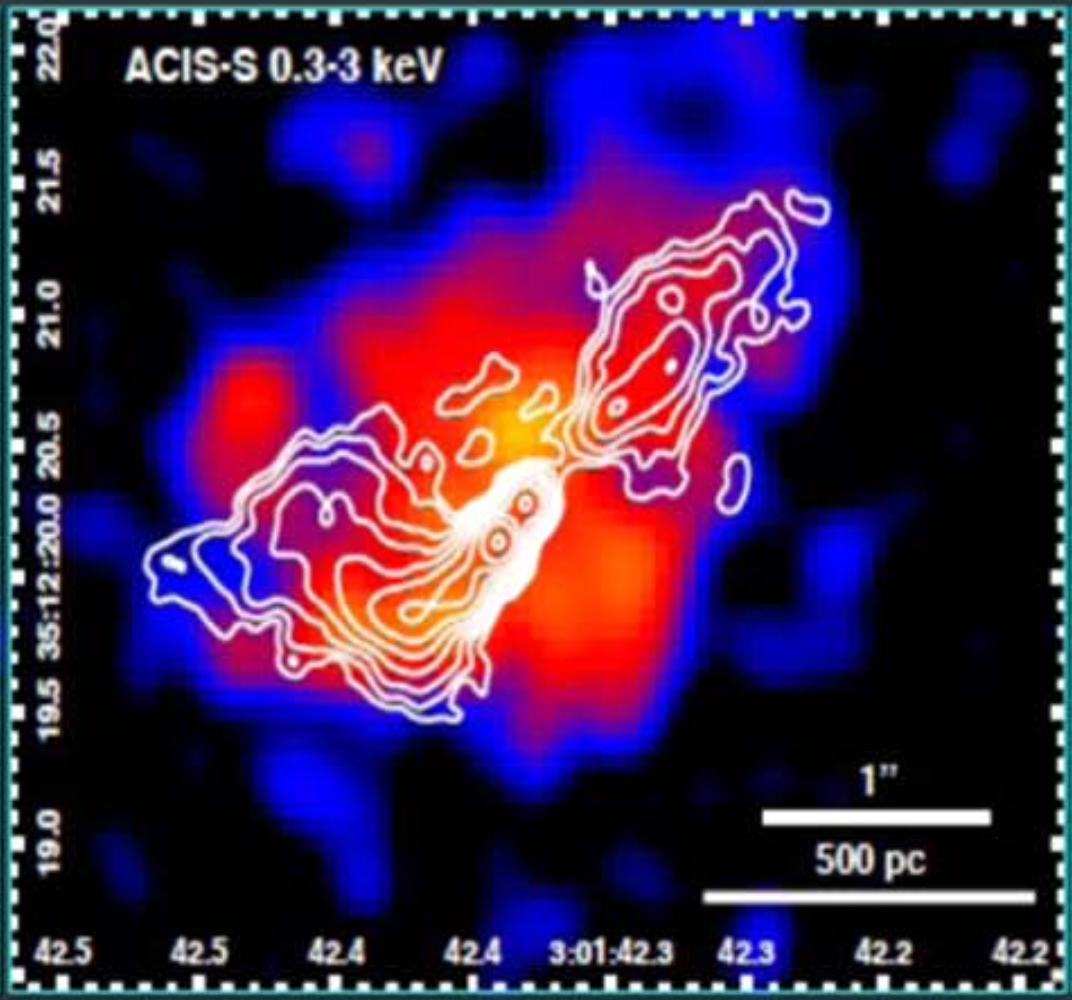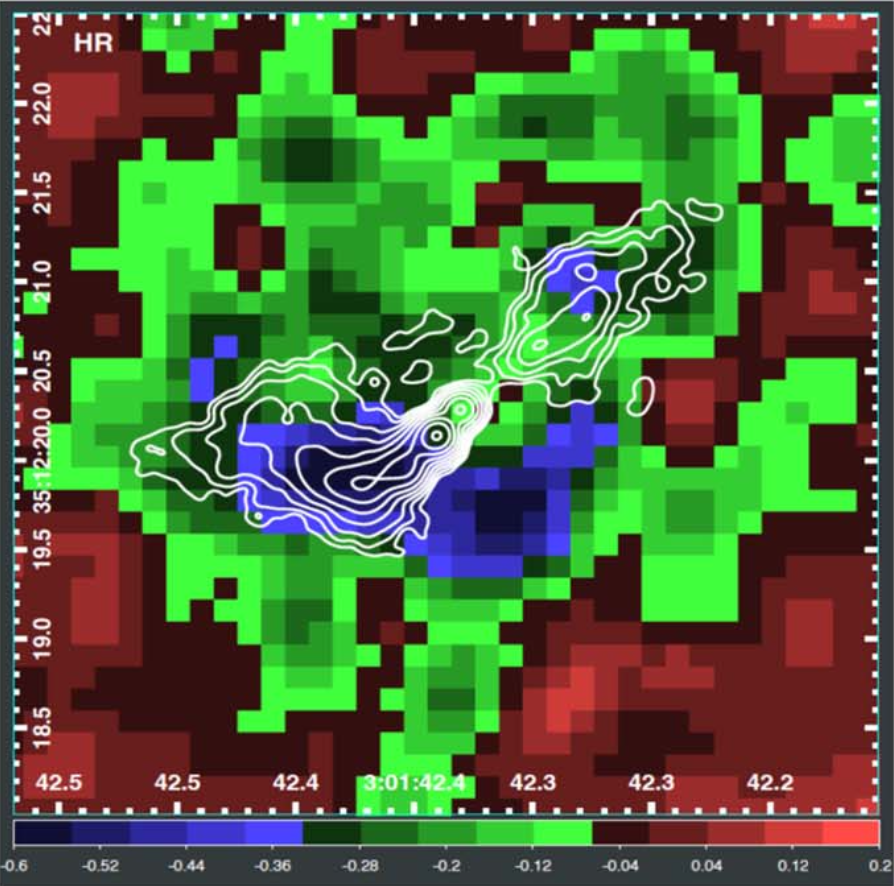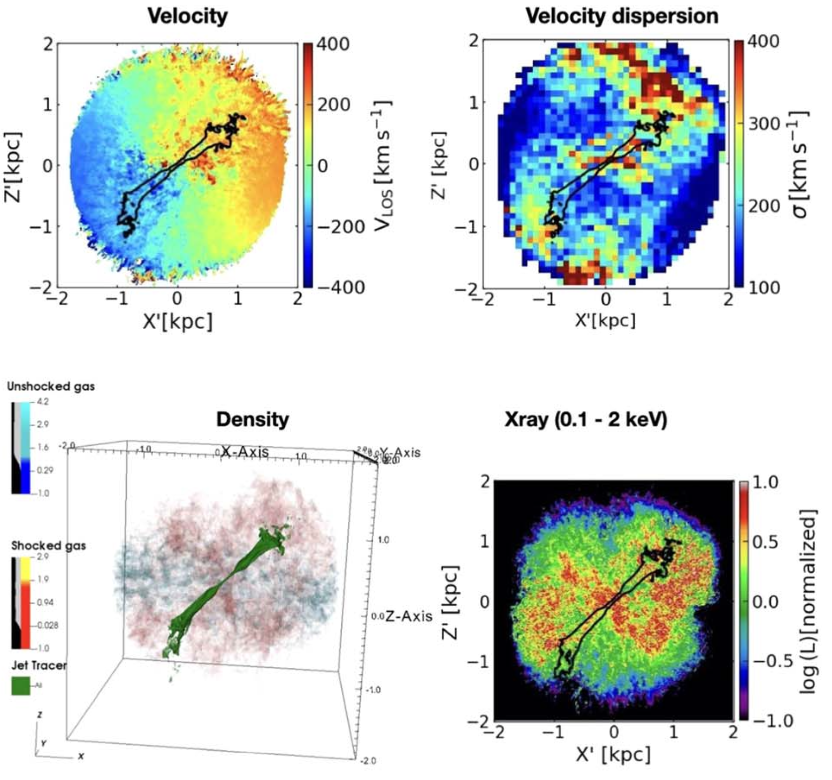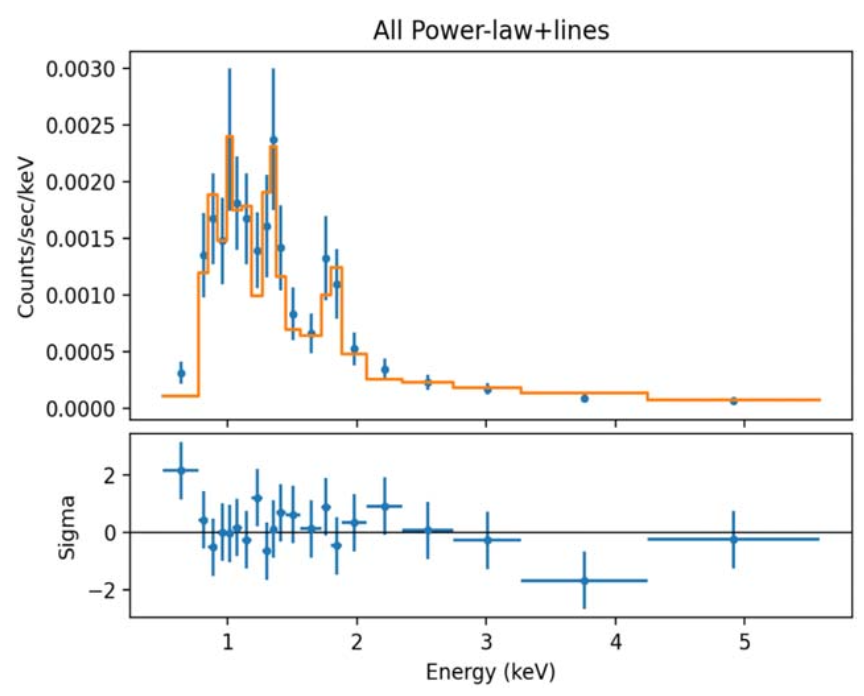Achievements & Publications
Jet-ISM Interaction in NGC 1167/B2 0258+35, an LINER with an AGN Past
Fabbiano, G., Paggi, A., Morganti, R., Baloković, M., Elvis, M., Mukherjee, D., Meenakshi, M., Siemiginowska, A., Murthy, S.~M., Oosterloo, T.~A., Wagner, A.~Y., & Bicknell, G.
Abstract
We report the results of joint Chandra/ACIS-NuSTAR deep observations of NGC 1167, the host galaxy of the young radio jet B2 0258+35. In the ACIS data, we detect X-ray emission, extended both along and orthogonal to the jet. At the end of the southeast radio jet, we find lower-energy X-ray emission that coincides with a region of CO turbulence and fast outflow motions. This suggests that the hot interstellar medium (ISM) may be compressed by the jet and molecular outflow, resulting in more efficient cooling. Hydrodynamic simulations of jet-ISM interaction tailored to NGC 1167 are in agreement with this conclusion and with the overall morphology and spectra of the X-ray emission. The faint hard nuclear source detected with Chandra and the stringent NuSTAR upper limits on the harder X-ray emission show that the active galactic nucleus (AGN) in NGC 1167 is in a very low-accretion state. However, the characteristics of the extended X-ray emission are more consonant to those of luminous Compton-thick (CT) AGNs, suggesting that we may be observing the remnants of a past high accretion rate episode, with sustained strong activity lasting ~2 × 103 yr. We conclude that NGC1167 is presently a Low- Ionization Nuclear Emission-line Region (LINER) , but was an AGN in the past, given the properties of the extended X-ray emission and their similarity with those of CT AGN extended emission.






 和 英
和 英